A FAN-tastical Find in the Fashion Archives
By Nora Ellen Carleson, 2018 Summer Fashion Archives Intern
“Some of the finest specimens, as far as the technical work is concerned, are made by Duvelleroy…”[1]
While we think of all the fantastic examples of historic clothing that the Fashion Archives possess, the Archives also hold exquisite examples of men’s, women’s, and children’s accessories. This includes, among other things, hundreds of fans from the 18th-20th centuries.
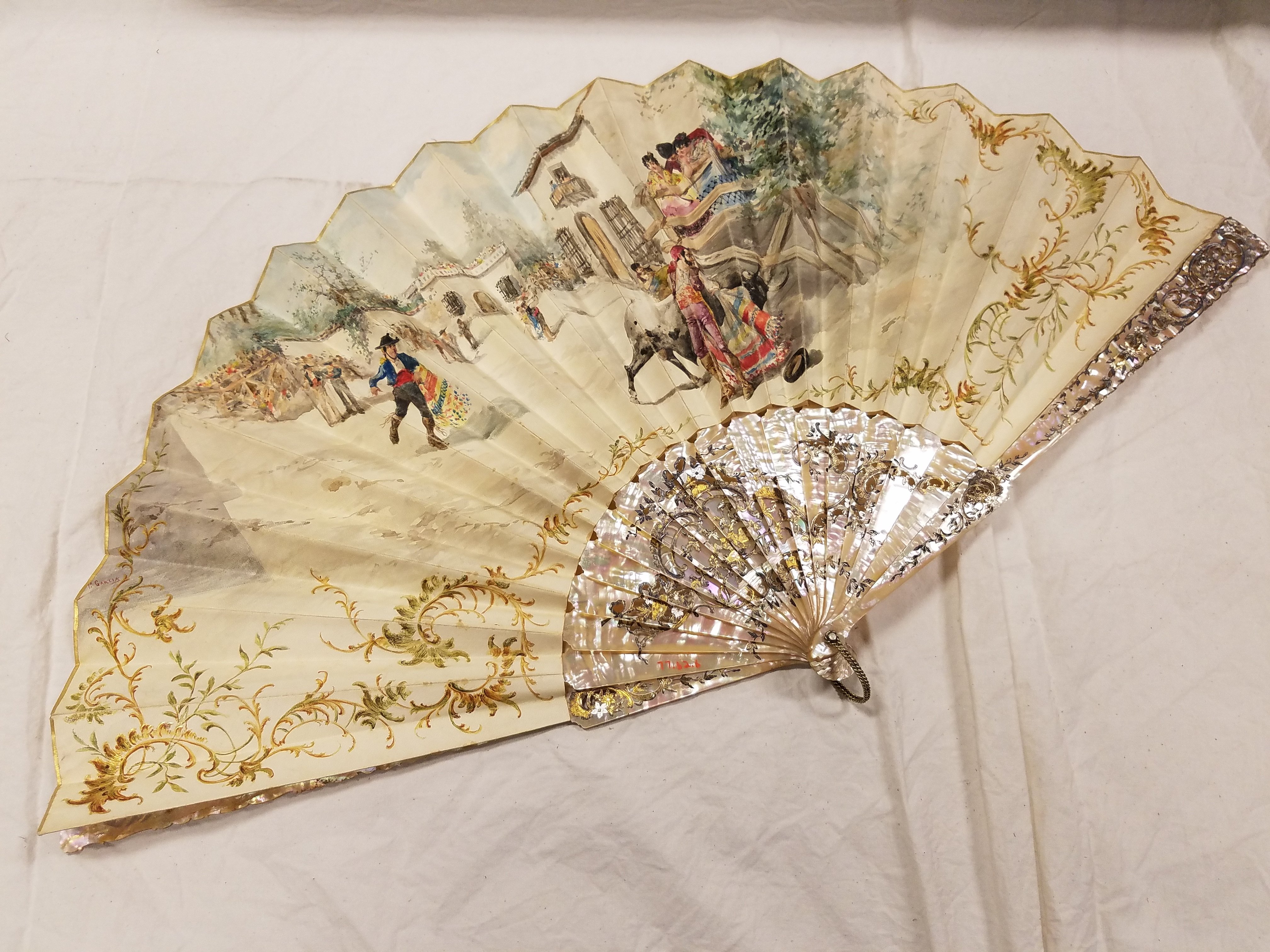 Front view of fan.
Front view of fan.
Hand Fan, attributed to Maison Duvelleroy, late-nineteenth century, paper, mother-of-pearl, gouache, and metal, Maryland Historical Society, Gift of Mrs. William S. Hilles, 1977.67.2.
An important role of the Fashion Archives Interns is to research, catalog, and re-house objects to preserve them for future visitors. With a collection so rich and with such great historical depth, we are often still discovering hidden gems. This past week, a superb nineteenth century hand fan was rediscovered (1977.67.2), possibly made by a famous fan maker known as Duvelleroy.
Maison Duvelleroy was founded in Paris in 1827 by Jean-Pierre Duvelleroy with the goal of creating elegant and luxurious fans. In 1851, Duvelleroy won first place for fans at the 1851 Crystal Palace Exhibition and was selected as the fan maker to Queen Victoria. Ten years later, Maison Duvelleroy expanded to London, opening a shop that later supplied goods to Queen Mary and eventually Queen Elizabeth II of England until it closed its doors in 1947.[2]
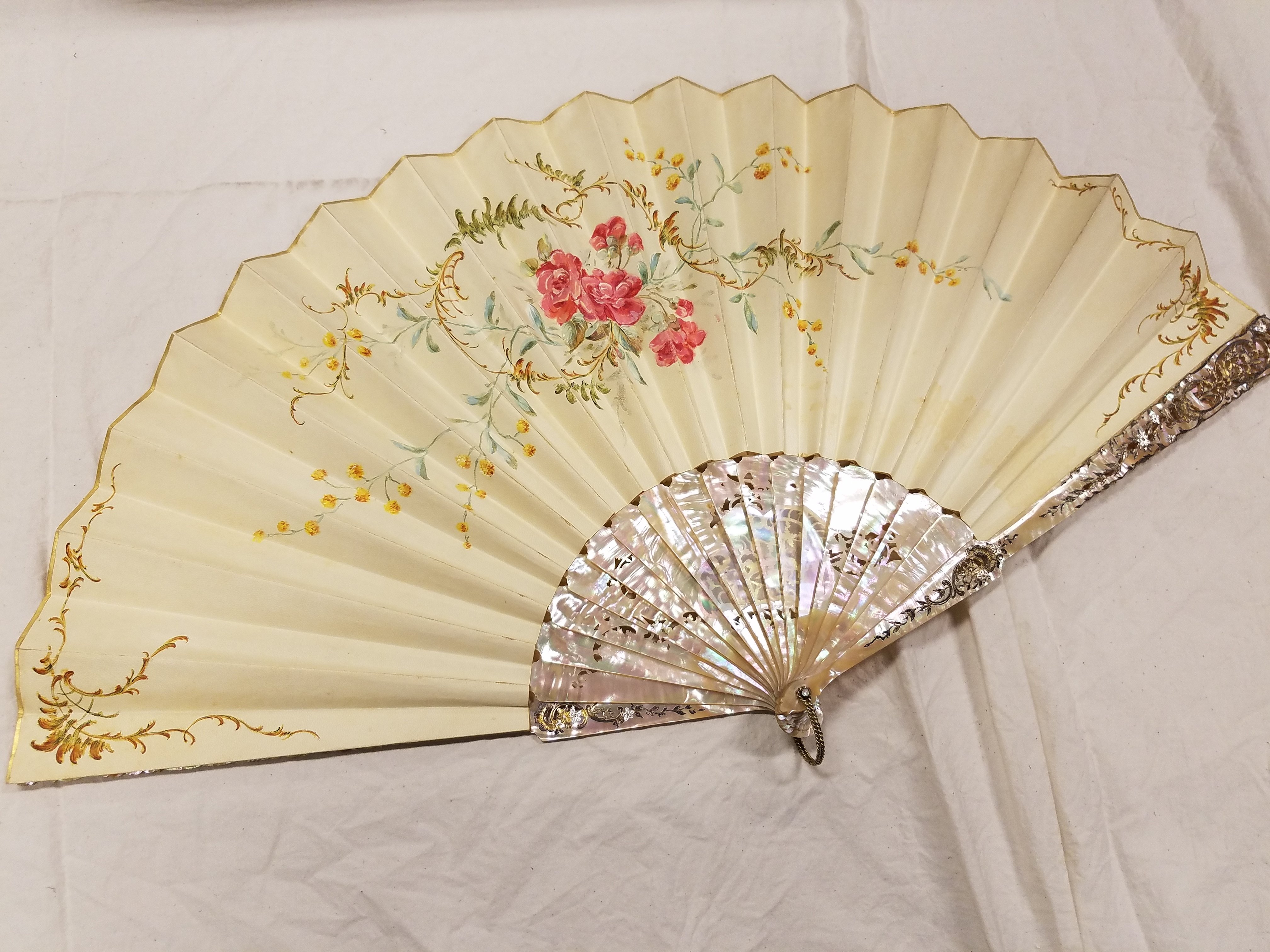 Back view of fan.
Back view of fan.
Hand Fan, attributed to Maison Duvelleroy, late-nineteenth century, paper, mother-of-pearl, gouache, and metal, Maryland Historical Society, Gift of Mrs. William S. Hilles, 1977.67.2.
In an 1889 issue of The Art Journal, it was written, “some of the finest specimens, as far as the technical work is concerned, are made by Duvelleroy, well known as a fan-maker both in France and England; and justly, from the artistic way in which he carries out the painter’s idea, in the mounting of the fans which are placed in his hands.”[3]
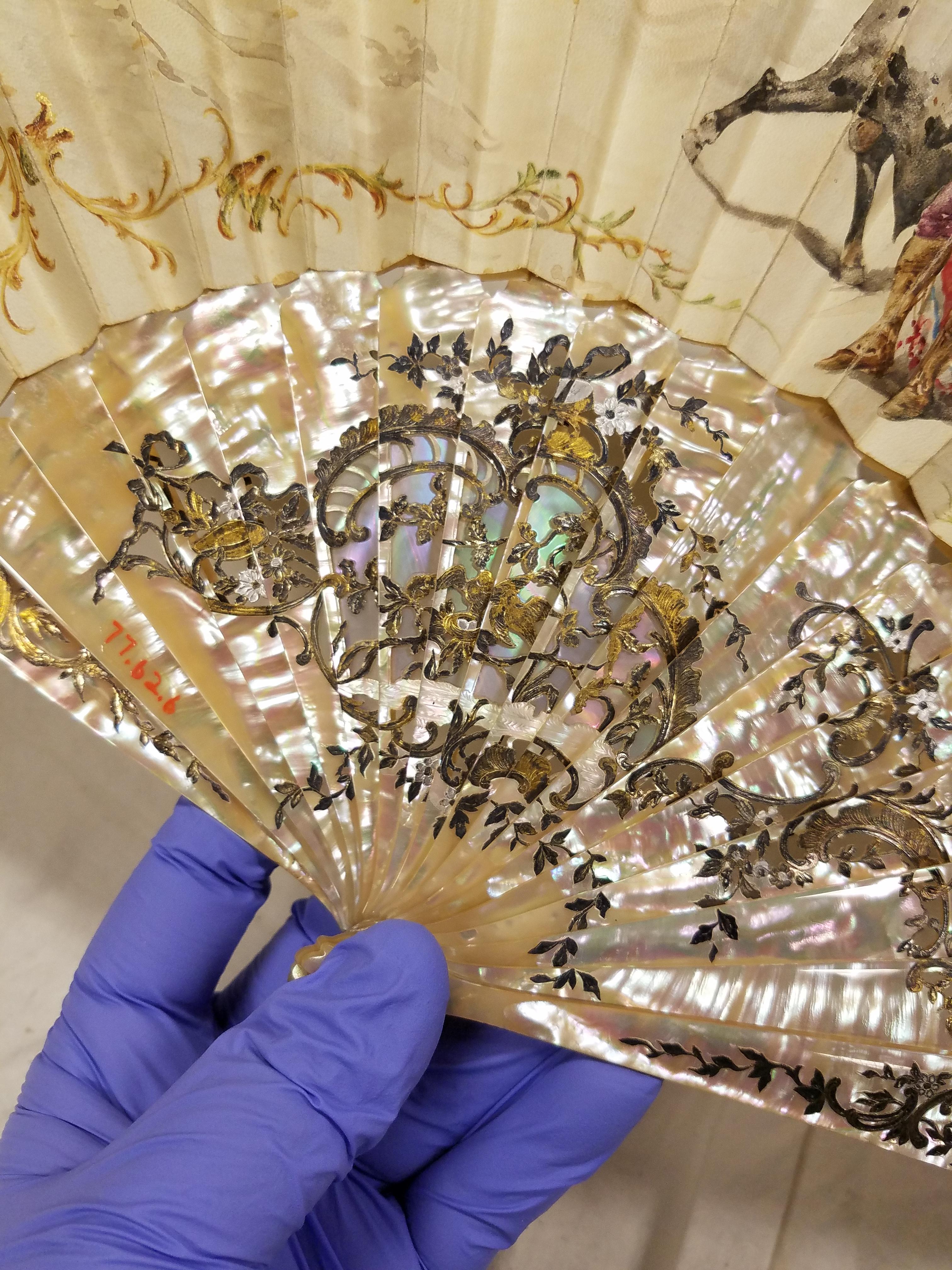 Front of sticks, detail.
Front of sticks, detail.
Hand Fan, attributed to Maison Duvelleroy, late-nineteenth century, paper, mother-of-pearl, gouache, and metal, Maryland Historical Society, Gift of Mrs. William S. Hilles, 1977.67.2.
The fan in the collection of MdHS was originally donated in a Duvelleroy box. While the fan itself is not labeled, the quality of the fan does speak to the highest quality. Made of mother-of-pearl that is both pierced and inlaid with gilt metal, the impeccable craftsmanship is further seen through the thin carving at the center of the mother of pearl sticks that accentuates the transparency the mother-of-pearl.
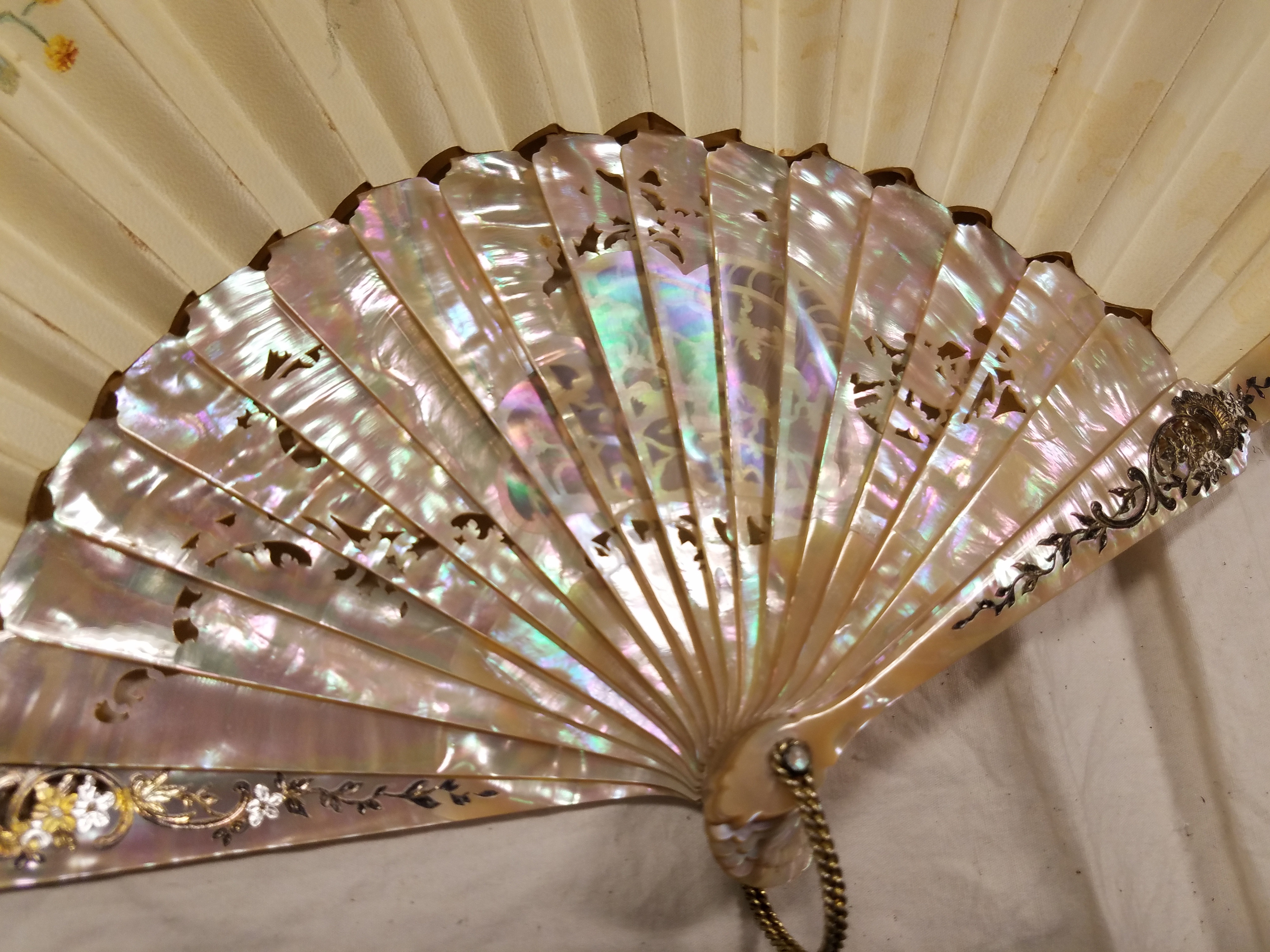
Back of sticks, detail.
Hand Fan, attributed to Maison Duvelleroy, late-nineteenth century, paper, mother-of-pearl, gouache, and metal, Maryland Historical Society, Gift of Mrs. William S. Hilles, 1977.67.2.
The leaf of the fan features a hand-painted scene of a bull fight on one side and flowers on the other. The scene is signed by the artist, “P. Garcia.” While little is known of this artist, Maison Duvelleroy was known to work with some of the greatest graphic artists of his day, including Paul Irbe. [4]
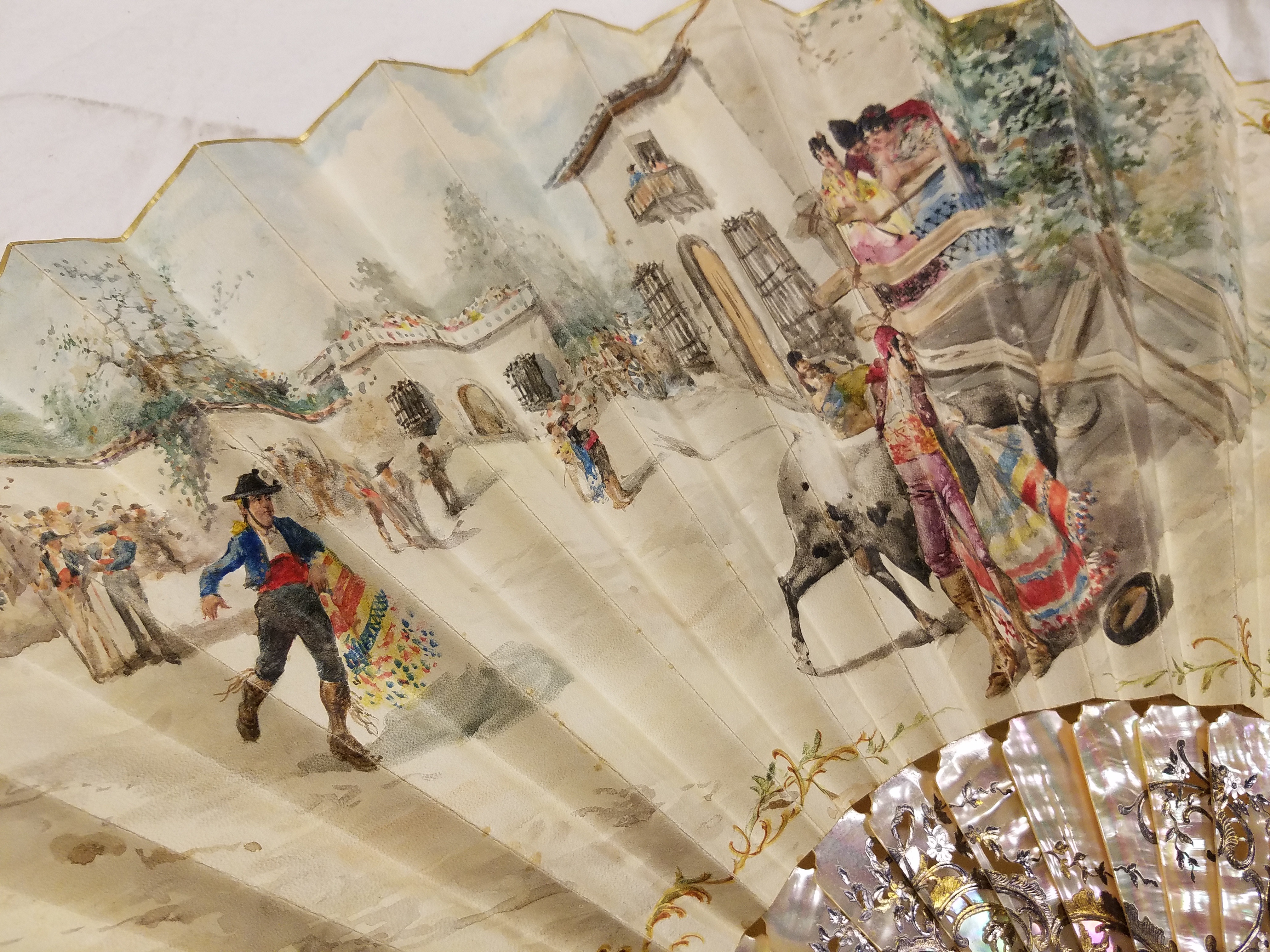
Front of fan leaf, detail.
Hand Fan, attributed to Maison Duvelleroy, late-nineteenth century, paper, mother-of-pearl, gouache, and metal, Maryland Historical Society, Gift of Mrs. William S. Hilles, 1977.67.2.
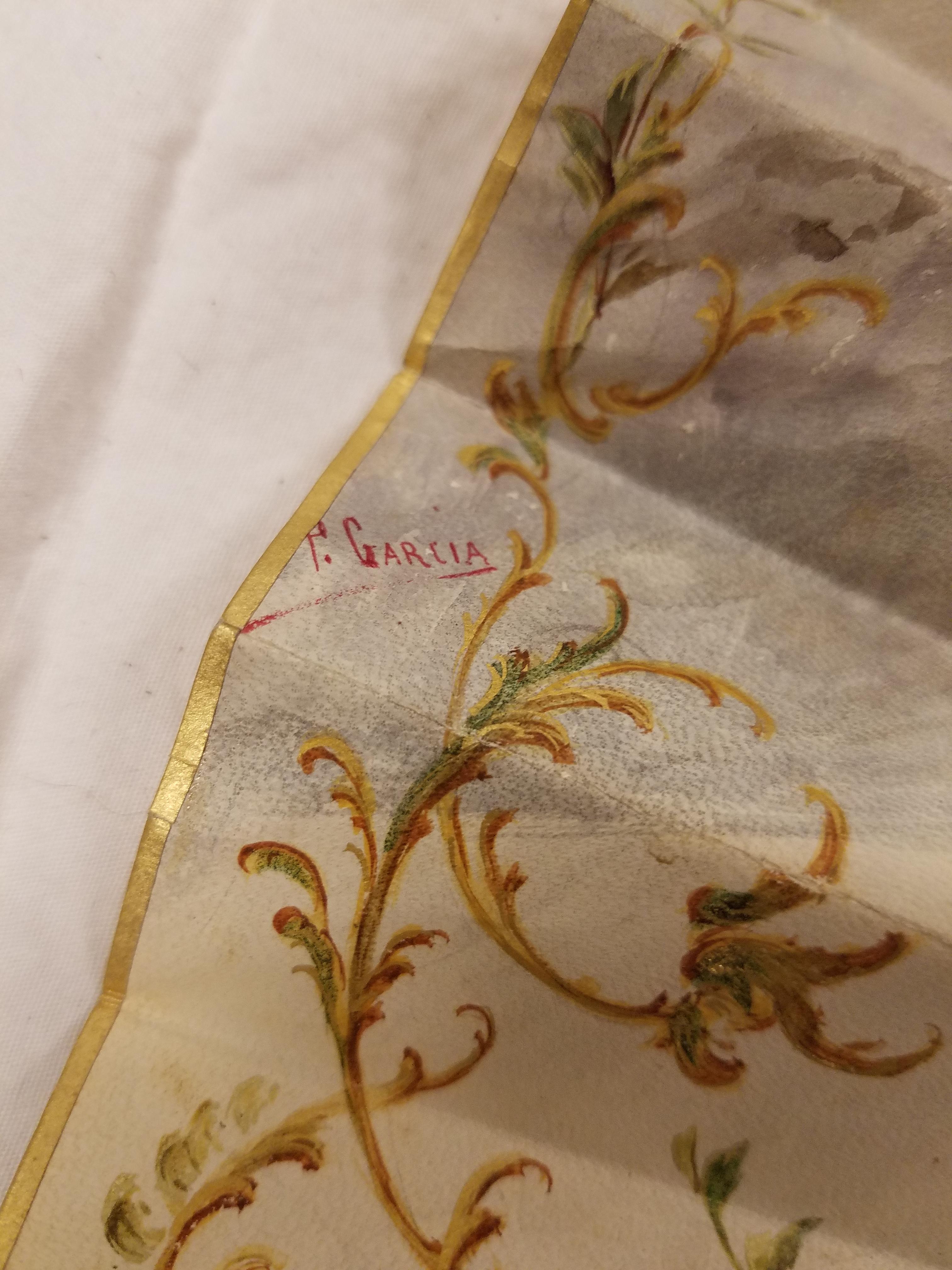
Front left of fan leaf, detail.
Hand Fan, attributed to Maison Duvelleroy, late-nineteenth century, paper, mother-of-pearl, gouache, and metal, Maryland Historical Society, Gift of Mrs. William S. Hilles, 1977.67.2.
Beyond the magnificent fans created by Duvelleroy, the company is often credited with creating “fan-language.” “Fan-language” was a way of displaying and moving one’s fan to denote certain phrases to onlookers such as “I’m married,” “We’re being watched,” “I love you,” and so much more. While these signals did not actually original with Duvelleroy, he printed a pamphlet outlining the “language,” which now helps us to understand how his fans were used.
While it may seem odd to us today that beautiful fans such a this were used to pass hidden messages, really, those messages were not unlike the use of gifs, emojis, and memes today that convey messages only a select group might understand. In the nineteenth century, fans, like our cells phones now, were important ways of communicating to others and one rarely left the house without one.
Resources:
[1] The Art Journal (Virtue and Company, 1889), 124.
[2] Isabelle Janvrin, The French in London, (London: Bitter Lemon Press, 2016) 146; Eugene Lee, “House of Duvelleroy,” Duvelleroy, accessed June 25, 2018, https://eventail-duvelleroy.fr/en.
[3] The Art Journal (Virtue and Company, 1889), 124.
[4] Isabelle Janvrin, The French in London, (London: Bitter Lemon Press, 2016) 146; Eugene Lee, “House of Duvelleroy,” Duvelleroy, accessed June 25, 2018, https://eventail-duvelleroy.fr/en.
New Call-to-action

